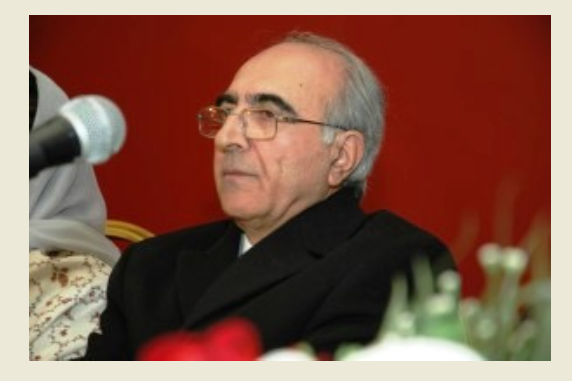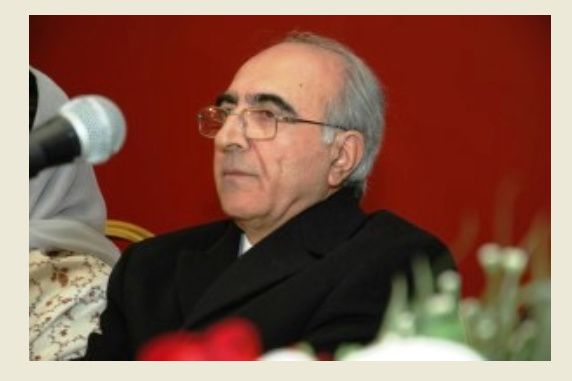Dr. Rahmat Rabi Zirakyar zirakyar1234@yahoo.com
Part 2
(دوهــمه بـرخه)
The Jews will inhabit Aelia conjointly with the Christians, and those who live there will require to pay the poll-tax, like the inhabitants of other towns. Greeks and robbers are to leave the town, but will have a safe-conduct until they reach a place of security….” Quoted in Sir William Muir, Ph. D. (Bologna), The Caliphate: Its Rise, Decline, and Fall. A new and revised edition by T.H. Weir, M.A., D.D. (Aberdeen), p. 134. According to another version of the text of the above treaty, Jews were not allowed to live in Jerusalem, which is contradicting the previous text. Until highly critical and well-meaning scholars would discover the truth about the treaty between Caliph Omar and Archbishop Sophronius in Jerusalem, I have to turn to Dr. Rivka Gonen, a Jewish Israeli, who has offered a reasonable explanation for the contradiction. Until her retirement in June 2002, Dr. Gonen was senior curator of the Department of Jewish Ethnography at the Israel Museum, Jerusalem. Her book is giving the reader a more in-depth view of the Temple Mount. The clause of forbidding Jews from living in Jerusalem in the capitulation treaty of 638 A.D., “the result of strong pressure exerted by the patriarch [Archbishop Sophronius] seems to have been retracted very shortly after the treaty was signed.” (Emphasis added). During the 300 or so years of Byzantine Christian rule since the conversion of Emperor Constantine to Christianity (possibly in 312), the Temple Mount “was robbed of all vestiges of holiness.” At the time of the Muslim conquest of Jerusalem in 638 A.D., the Temple Mount “was covered by heaps of garbage, piled there by Byzantine Christians.” According to both the Muslim and Jewish cotemporary sources, members of these two communities “participated in cleaning” the Temple Mount of the rubbish dump. After the Muslim conquest of Jerusalem in 638 A.D., Jews became “able to establish themselves in the city and, perhaps because of their participation in the original cleaning of the Temple Mount, were granted entrance to the Temple Mount as cleaners of the edifice and producers of glass for the mosque’s lamps. In return, those individuals who were thus occupied were exempt from poll tax. Thus”, Dr. Gonen continues, “ during the early Muslim period Jews not only lived in Jerusalem but were allowed on the Temple Mount, and there are literary indications that they may have had a synagogue there.” Emphasis added. For quotations see, Dr. Rivka Gonen, Contested Holiness: Jewish, Muslim and Christian Perspectives on the Temple Mount (Jersey City, NJ: KTAV Publishing House, 2003), pp. 83-86. Former nun and current writer Karen Armstrong, who has studied religions for more than two decades, writes: “The Caliph [Omar] helped his Muslims to clear the garbage [accumulated on the Temple Mount] with his own hands.” Karen Armstrong, Holy War: The Crusades and Their Impact on Today’s World (New York and London: Doubleday, 1991), p.46.
The hearts and minds of Jews, Christians and Muslims are possessed with Jerusalem. The Brookside Church gave Craig Anderson and his family a trip to the Holy Land (Haram Sharif) in 1999. He writes in 2003, that he “had no conception of how closely intertwined the holy sites” of the three monotheistic religions are. “Look no further,” Anderson continues, “than the incendiary visit a few years ago of Ariel Sharon to the Temple Mount, accomplished by a legion of armed security personnel. He was about as welcome there as a Taliban leader would be at ground-zero”, New York City(Sept. 11
11, 2001 ). Craig Anderson, “When Religion Becomes Evil. III. Establishing the ‘Ideal’ Time”, 5 pages. www.brooksidechurch.org/seremon/WhwnidealTime.htm, [17-7-2007].
For some orthodox Jews, the messiah cannot come until the Temple is rebuilt for the third time (the second Temple was destroyed by the Romans in 72 A.D.). For Christians the messiah is Jesus Christ. For many devout Christians, Jesus will return only after the Temple is rebuilt. Why is the Temple Mount (Haram Sharif) considered holy to Muslims? The Dome of Rock and the al-Aqsa Mosgue (the Farthest Mosque from Mecca) make up the third holiest site after Mecca and Medina. Caliph Abdel Malik built the Dome of the Rock in 68 Hijri (691 A.D.). One aya (verse or passage) from Koran (the Holy Book of Islam) links the prophet Mohammad with Jerusalem and the Temple Mount. It is the seventeenth Sura (chapter), entitled, “al-Isra” (The Night Journey) or “Bani Israil” (The Children of Israel). This Sura opens with the spiritual journey or the mystic vision of the Ascension of the Islamic Prophet Mohammad to the heaven. His Journey (Mi’raj) was with the Archangel Gabriel, from the Sacred Mosque (Masjid al-Haram, in Mecca) to the Distant or Farthest Mosque (Masjid al-Aqsa in Jerusalem). The Ascension began at the Rock. “In the name of Allah, Most Gracious, Most Merciful. Glory to (Allah) who did take His Servant for a Journey by night from the Sacred Mosque to the Farthest Mosque, Whose precincts We did bless-in order that We might show him some of Our signs.” (Sura al-Isra,17:1). Quoted from the Meaning of the Holy Koran. Abdullah Yusuf Ali. English and Arabic. New Ed. Beltsville, Maryland: amana Publications, Reprinted 1422 after Hijri/2001. According to the commentary #2168 on the above verse, the Dome of Rock and al-Aqsa Mosque “were completed” by the Amir ‘Abdel Malik in 68 after Hijri (691 A.D.). However, Lambert Dolphin writes that the al-Aqsa Mosque “was built between A.D. 709 – 715 probably by Caliph Waleed, son of Abdel Malik, the man who constructed the Dome of Rock” in 691 A.D. Visit Lambert Dolphin, “Allah and the Temple Mount”, 15 pages, [19-07-2007] , <www.templemount.org/allah.html>. A hard-line stance in the current “battle for Jerusalem” is taken by Ovadyah Avrahami of the Bible Revelations Ministries who has been a Bible student for the last 40 years, probably a Rabbi: “Any [ non-Jewish] claim on this city… will amount to no less than a Declaration of War on G-d [God]…. Any power claiming alternative rights over Jerusalem, is therefore challenging Almighty G-d[God] and His plan for Jerusalem.” Ovadyah Avrahami, “Whose Jerusalem? Whose Land? The Bible & the Solution to the Current Battle for Jerusalem”, 4 pages. <http://christianactionforisrael.org/batttle2.html>, [July 26, 2007].
But here we face a divinely structural problem: Prophet Abraham was the Patriarch of both the Arabs and Israelis. Arabs believe that they are descendants of Ishmael (Isma’il in Arabic), the oldest son of the Prophet Abraham, and, thus, one generation earlier than the Israelis whose line of descendence starts with Isaac, the brother of Ishmael and the father of Jacob. The divine mandate is becoming a ticking bomb.
The Reverend Dr. Naim Ateek is a Palestinian Christian and the director of the Sabeel Ecumenical Liberation Theology Center in Jerusalem. He has offered in the
Summer of 2002, “a Palestinian Christian perspective” on the Israeli-Palestinian conflict. He has identified the actions of two biblical heroes (Samson and Joshua) against the Philistines as a framework of reference for the actions of Israeli rulers against the Palestinians today. The Hebrew Bible (the Old Testament) says that Samson killed many more Philistines as he killed himself than in all of his life. Reverend Ateek does not believe in “ a theology of a biased God who only stands with Israel whether right or wrong….Christ is not in the tanks and jet fighters, fighting on the side of the oppressor… God is in the city of Gaza, in the Jenin camp and in the old city of Neblus, Ramallah, and Bethlehem suffering with the oppressed. God has not abandoned us. We reject suicide bombings because, from a Christian perspective, they reflect feelings of total despair and hopelessness. We must never lose hope.” Reverend Dr. Naim Ateek, “Suicide bombers: What is theologically and morally wrong with suicide bombings?” in Cornerstone, issue 25, summer 2002, 15 pages. www.sabeel.org/old/news/cstone25/suicidebombers.htm, [June 7, 2007]. Religious scholar and former nun Karen Armstrong writes that Prophet Moses died during Exodus, and Joshua in about 1200 B.C. led the Israelites into Canaan. He established them there “by means of long and utterly ruthless military campaign.” (Holy War: Crusades and Their Impact on Today’s World, New York: Doubleday, 1991, p. 8). For the stories of Samson and Joshua see the Hebrew Bible (Judges 13-16; Joshua 8:24, 25, 28, and 11: 21-22). Samson’s last single act (to kill many more Philistines) seems to be a symbol of bringing down the universe.
Professor Noam Chomsky is America’s leading dissident intellectual and “a major scholarly resource”-The Guardian. Professor Chomsky calls the above story “the Samson Complex”. In an interview he elaborates on this: "What it means, translated into straight politics-and they [Israel] are pretty straight about it-is: if anybody pushes us too far, we’ll bring down the universe. Now in order to do that, Israel needed nuclear weapons-and they got them, with our [U.S.A.] help.” Noam Chomsky, Understanding Power: The Indispensable Chomsky. Edited by Peter R. Mitchell and John Schoeffel. New York: The New Press/W.W. Norton, 2002, pp. 303-304.
Shaykh Professor Abdul Hadi Palazzi teaches in the Department of the History of Religion at the University of Velletri in Rome, Italy. He and Dr. Asher Eder (Jerusalem, Israel) co-founded in 1989, the Islam-Israel Fellowship. Prof. Palazzi serves as the Muslim Co-Chair of the Fellowship, and Dr. Eder serves as the Jewish Co-Chairman. “From the Islamic point of view”, Prof. Palazzi says, “there is NO fundamental reason which prohibits Muslims from recognizing Israel as a friendly state [emphasis added].” Shaykh Prof. Palazzi reminds us that earth “belongs exclusively to God” and the Almighty is “free to entrust sovereignty over land to whomever He likes for whatever time period that He chooses.” To support his position, Prof. Palazzi refers to three passages from the Koran, the holy book of Muslims: Sura 3 (al- ‘Imran): 26; Sura 5 (al-Mai’dah): 20-21; Sura 17 (al-Isra’): 104. Visit Shaykh Prof. Abdul Hadi, “What the Qur’an Really Says”, 7 pages. www.templemount.org/quranlalnd.html, [July 19, 2007].
Former nun and current writer Karen Armstrong has studied religions for more than two decades. She has published important books with cutting edge insights on the three religions as well as providing rich and balanced information about the most important issue-areas in inter-religious understanding in the Middle East. In a recent interview on June 18, 2007, Armstrong was asked two questions which are relevant to our topic: “Is it possible to have a multi-religious community or nation living peacefully? Or do you need secularism as a base or at its centre to make it?” She answered as follows: “Under Islam in the past, there were harmonious communities living together, famously in Muslim Spain [711-1050], which was unique. There’s nothing like it in the rest of Europe. Similarly, the first period of Jerusalem’s history was light years away anything we have got today. (The [second] Caliph) Omar, when he conquered Jerusalem, brought the Jews back. They hadn’t been allowed to live there under Christian rule. And there was a Christian majority in Jerusalem until the time of the Crusades. It was known as the City of Dhimmis (non-Muslims).” The second question was: “But these days, the Dhimmis believe that you would not be equal unless you are treated as equals.” Karen Armstrong responded: “Yes. The Dhimmis system wouldn’t work today. We don’t have the kind of economies that can support an egalitarian ideal. That’s important, too. It’s not just a question of us all becoming more civilized and nicer people-you need the economic basis for it. There must be absolute equality, one person one vote. And that is probably the best way of achieving a (harmonious society). But there is always going to be tension.” Visit “Muslims Need More Creative Voice [Interview with Karen Armstrong; ref. John Esposito] by Aniza Damis, The New Straights Times (Malaysia), June 18, 2007, and 3 pages.[August 8, 2007],
http://www.nst.com.my/Current_News/NST/Monday/National/20070618082106/Article/index html
Proposals for Solutions in the 20th Century
Pope John Paul II emphasized in 1979 two things: (1) the need to foster dialogue between Christians, Jews, and Muslims, as well as (2) the need for Jerusalem to be a guaranteed center for harmony for adherents of all three religions. This position is maintained by the current Pope. After illustrating various perspectives on Jerusalem problem, now it is time to present its specifics.
Ruth Lapidoth has identified four major “components” for the thorniest problem of all, namely Jerusalem:
1. National aspirations of Israelis and Palestinians. Both have conflicting claims to sovereignty. While Israel claiming sovereignty over the whole city of Jerusalem, Palestinians have a similar claim over the eastern neighborhoods of the city[ and dreaming of al-Quds as the capital city of Palestine].
2. The religious aspect. “Some of the most sacred places” of the three monotheistic religions are located in Jerusalem which are holy to many millions of people who do not live in the city or in the area.
3. Municipal management. Jerusalem covers an area of 126 square kilometers (49 square miles) where 732,100 people live. The population of Jerusalem is very heterogeneous. This requires special solutions for the municipal management.
4. The periphery. In spite of any compromise on the borders, Jerusalem will be between Israel and the Palestinian state. Special arrangements are needed for relationship between the city and its periphery regarding cultural/educational and municipal services. Visit Ruth Lapidoth, , “Some Reflections on Jerusalem”, in Palestine-Israel Journal of Politics, Economics, and Culture. Vol. 14, No.1, 2007, 6 pages. www.pij.org/details.php?id=1044, [19 July 2007].
A precise policy paper was co-authored by a professor of law and a professor of religion in 76 pages: Marshall J. Berger and Thomas A. Indinopulos, Jerusalem’s Holy Places and the Peace Process, 1998, op.cit. In this study they suggested three approaches for the future of the holy places in Jerusalem. Prof. Joseph Nevo at the Haifa University has provided a succinct summary of the three approaches: “The first is to transfer the power(or control) over the holy places to an interfaith committee consisting of representatives of the various Christian sects, Muslim groups and Jewish community. The second is to devolve power to committees of the relevant religious confessions. Each would govern its own holy places (the ‘functional internationalization’ approach). The third suggested approach is to leave the matter to various international guarantees such as UNESCO and the Hague Conventions.” Prof. Joseph Nevo, “Jerusalem’s Holy Places and the Peace Process”[ Book Review], in Encounter, summer 2002, 3 pages. http://findarticles.com/p/articles/mi_qa4044/is_200207/ai_n9140509, [19-07-2007].
Reverend Jean-Louis Tauran of United States Conference of Catholic Bishops wrote in the last year of the 20th century that “ if God is one, this requires that all should consider themselves brothers…. Believers thus have a special responsibility for peace building. Religious leaders should make one of their main priorities the promotion of an authentic ‘pedagogy for peace’.” This is of “universal importance” because the three religions have followers throughout the world . Reverend Jean-Louis Tauran, “The Holy See and the Middle East”, March 10, 1999, 4 pages. www.usccb.org/bishops/tauran.shtml, [July 19, 2007].
We know that the word “Allah” is the Arabic equivalent of the Hebrew “Elohim” (the greatest God). We know that Jerusalem has sacred significance for three religions and national significance for two peoples. We know that sensitivity to history, religious doctrine, and religious symbolism is essential to Jerusalem which is filled with history, religion and sacred places. We know that peace can never be achieved unless the sacred space of all three religions is respected: The rights and traditions of each community in its holy sites shall be respected; the freedom of worship shall be supported by freedom of access to the sacred sites; the sacred space shall be administered in a way that provides public access while respect for community tradition is maintained; a legally binding definition of the sacred space/site/place shall be established to prevent their proliferation; and each religious group shall clarify its “holy” boundaries of “its” Jerusalem. We know that the first Muslim state (city state in Medina) under the leadership of Prophet Mohammad had applied pluralism (People lived there as people of the agreement, not Dhimmis, non-Muslim neighbors): “Ummatan Wahedatan” (One Community) as long as the people of the accord honored their accord. We know that when the second Caliph of Islam Omar arrived in Jerusalem, he “brought the Jews back”. We know that in the Muslim Spain, people of different faiths live in a harmonious society. We know that Jerusalem was known as the City of Dhimmis (non-Muslims) which had a Christian majority. We know that for centuries the door keeper of the Holy Sepulchre is Muslim. We know that the Jewish “shalom” is very similar to Islamic “salam” (peace). We know that the Arabic name for Jerusalem is “al-Quds” (Holiness). It is an abridged form of “Bayt al-Muqadas” (Sanctified House) which is very similar to the Hebrew “Beth ha-mikdash”. We know that two peoples and three religions have two universities in al-Quds (Jerusalem): an Israeli University (Hebrew University) and a Palestinian University (al-Quds University). If the 21st century needs “globalization”, and if this development needs values, then the new values should emerge in Jerusalem.
وروستي




